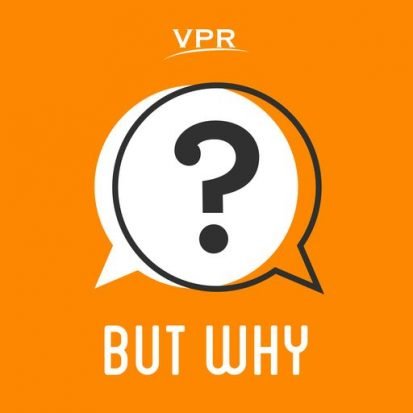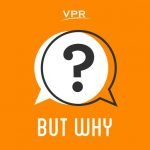
How Do You Whistle?
Leave a reviewHow do people whistle? How does whistling make a sound? Why does your tongue change a whistle higher or lower? Can you get a trophy for whistling? Can people with laryngitis whistle? Get ready, we learn all about whistling with musician and champion whistler Emily Eagen and musician Yuki Takeda. And who whistles our theme song? We’ll hear from musician Luke Reynolds, and a kid whistling chorus from our listeners!
© Vermont Public Radio | 28:00
|Episode: 153 |
Full episode description
 Episode One: But Why: Intro For Adults
Episode One: But Why: Intro For Adults
This is an Episodic show. You can listen to it in any order, but episode one is always a great place to start.Full Episode description
How do people whistle? How does whistling make a sound? Why does your tongue change a whistle higher or lower? Can you get a trophy for whistling? Can people with laryngitis whistle? Get ready, we learn all about whistling with musician and champion whistler Emily Eagen and musician Yuki Takeda. And who whistles our theme song? We’ll hear from musician Luke Reynolds, and a kid whistling chorus from our listeners!
Download our learning guides: PDF | Google Slide | Transcript
How do you whistle? – Aurelia, 6, New York
Emily says the first thing you should do is lick your lips or use lip balm. “If your lips are dry when the air passes it doesn’t feel good,” she says. Then you’ll make your lips kind of into a pucker, circle your lips tightly.
Next, stick your tongue touching your bottom teeth. Then you make kind of a yuh, yuh, yuh sound. “But instead of saying the words, make it with a little stream of air. You want to let air pass over the top of your tongue and out your lips. You’re making a tiny little instrument by curling your tongue.”
“I like to think about between your nose and your lips, that’s a little body part called a philtrum. I like to pretend that my whistle is coming out of that. That helps me make the sound have a little focal point,” she says.
Emily says it helps to make little sounds when you practice. “Pretend your sipping tea with that little tiny space there. You don’t want to push too much. If you blow too much air it won’t work. You have to be really gentle.”
Once you find your first whistle, it’s all about practice and playing around to see what sounds you can make.
“If you move your tongue forward, the notes go up, and if you move your tongue down, the notes go down,” she says. If you can make a variety of notes, then you can start putting them together to make music!
© Vermont Public Radiobop| Status: Active, 259 episodes | Kind: Episodic | Episode URL
The content, Artwork and advertising within this podcast is not owned or affiliated with Sound Carrot and remain the property of their respective owners.








